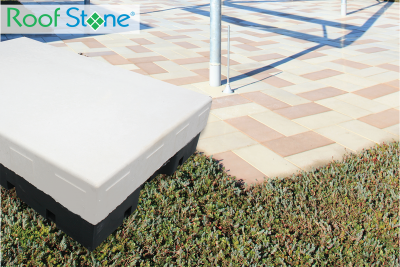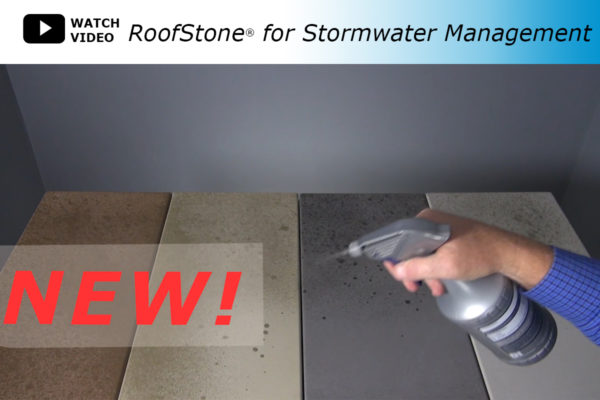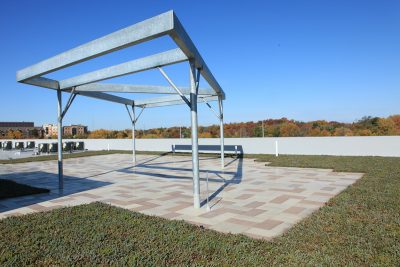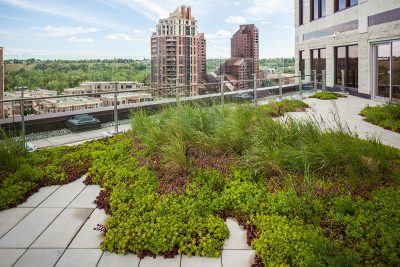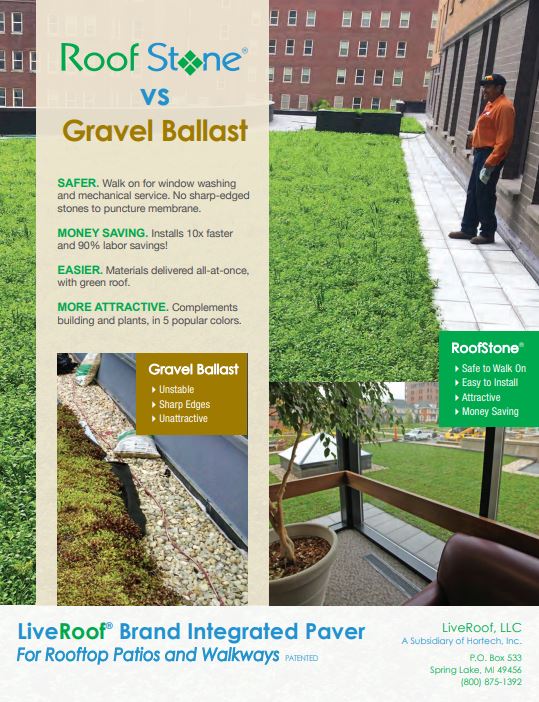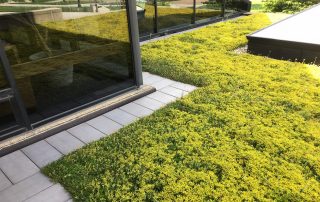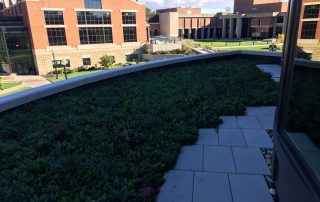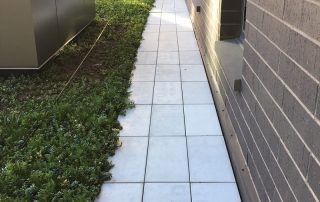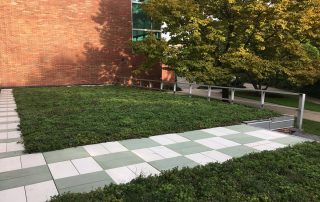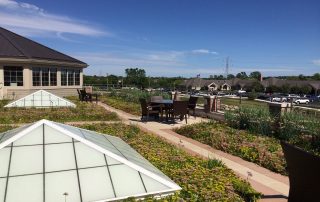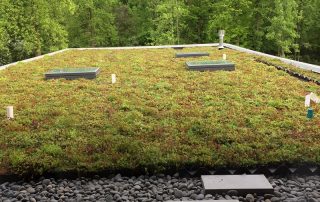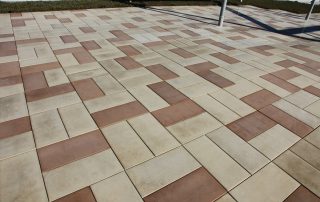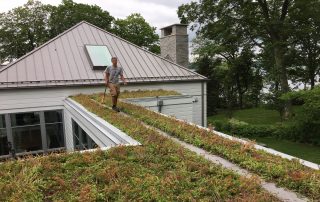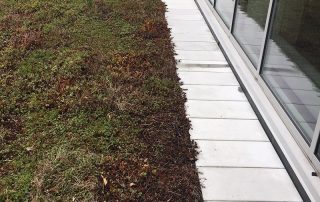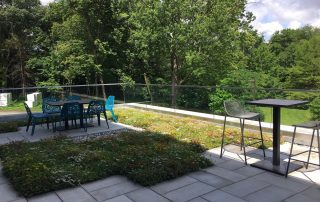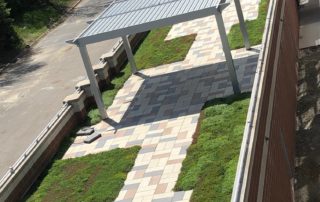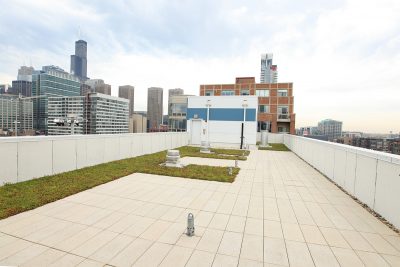RoofStone® Integrated Pavers
In response to designer demand for an artisan quality integrated green roof paver which integrates and contractor necessity for labor-saving solutions, LiveRoof developed the RoofStone® paver system.
RoofStone pavers contain built-in pedestal bases for easy handling and installation.
For more reasons to consider using RoofStone on your project, check out our slideshow of benefits:
Features
Installer Benefits
| RoofStone Paver |
Conventional Pedestal & Paver |
|
|---|---|---|
| Pedestal | Built-in | Purchased separately |
| Edging | Not required at green roof interface | Required |
| Installation | Fast, easy, inexpensive, labor saving | Can be cumbersome and costly |
| Wind Uplift | May connect pavers with WindDisc | Typically independently set |
FAQ
It is relatively easy to remove a LiveRoof module to access the roof deck.
- First, using a flat bladed shovel, probe the planting to locate the container edge.
- Then peel away some plant material. This is easy to do as the root systems of LiveRoof® plants is fibrous and easy to separate (not at all like sod).
- Using a sturdy pair of pliers, lift up and remove the exposed module.
- Any additional modules may be removed by trimming around them with the handle of a spoon and lifting them up.
- Once you are finished, replace the modules.
Important: Never use sharp instruments around roof membranes.
RoofStone follows the roof contour and can be used to create walkways, patios, and landing areas on most non-ADA compliant roofs.
RoofStone can also be used on roofs that must be ADA-compliant with slope up to 1:48, which equals 2.08% or 1.19 degrees. This is ¼ inch per 1 foot, which is the norm (minimum) roof slope for drainage.
Pavers may need to be cut to fit at the perimeter or around rooftop penetrations and equipment. For the cleanest cuts, LiveRoof recommends a wet saw with a 14” diamond concrete blade. A piece of tape should be placed over the cut line to prevent chipping. Most chop saws or circular saws will require cuts to be made on both sides of each paver.
Cut the concrete top first, then flip the paver over and finish the cut through the plastic base. Curved cuts can be made by making several straight cuts on an angle to create the curve.
To accommodate ridges, low penetrations, or irrigation lines, notches may be cut out of the plastic base. An angle grinder with a blade suited to cutting plastic is best for this task. It is ideal to remove entire sections of the RoofStone base when making notches. This keeps the factory edges in contact with the roof membrane and prevents potential damage from burs.


